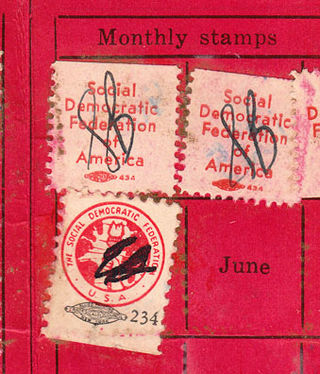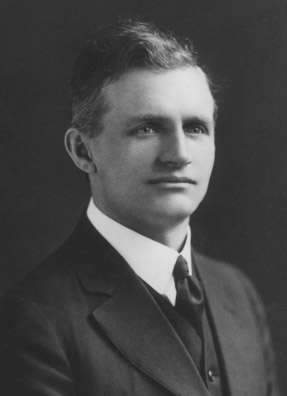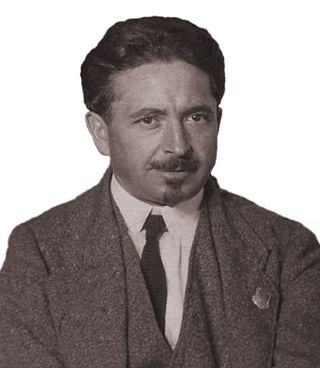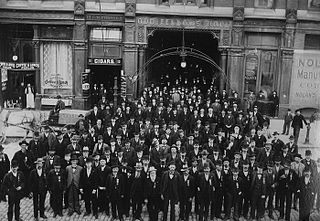
The Workers Circle or Der Arbeter Ring, formerly The Workmen's Circle, is an American Jewish nonprofit organization that promotes social and economic justice, Jewish community and education, including Yiddish studies, and Ashkenazic culture. It operates schools and Yiddish education programs, and year-round programs of concerts, lectures and secular holiday celebrations. The organization has community branch offices throughout North America, a national headquarters in New York City and approximately 11,000 members nationwide. It owns and operates a summer camp located in Hopewell Junction, New York called Camp Kinder Ring. It also runs an adult vacation campground facility, Circle Lodge, with bungalows and cottages, and a healthcare center in Bronx, New York.

The Young Communist League USA (YCLUSA) is a communist youth organization in the United States. The stated aim of the League is the development of its members into Communists, through studying Socialism and through active participation in the struggles of the American working class. The YCL recognizes the Communist Party USA as the party for socialism in the United States and operates as the Party's youth wing. Although the name of the group changed a number of times during its existence, its origins trace back to 1920, shortly after the establishment of the first communist parties in the United States.

The Social Democratic Federation of the United States of America(SDF) was a political party in the United States, formed in 1936 by the so-called "Old Guard" faction of the Socialist Party of America. The SDF later merged again with the Socialist Party in 1957 to form the Socialist Party-Social Democratic Federation (SP-SDF).

A benefit society, fraternal benefit society, fraternal benefit order, friendly society, or mutual aid society is a society, an organization or a voluntary association formed to provide mutual aid, benefit, for instance insurance for relief from sundry difficulties. Such organizations may be formally organized with charters and established customs, or may arise ad hoc to meet unique needs of a particular time and place.

Yrjö Elias Sirola was a Finnish socialist politician, writer, teacher, and newspaper editor. He was prominent as an elected official in Finland, as minister of foreign affairs in the 1918 Finnish Socialist Workers' Republic, a founder of the Communist Party of Finland, and as a functionary of the Communist International.
Bolesław Konstanty "Bill" Gebert was a top Communist Party official, remembered as one of the organization's top Polish-language speaking leaders. He was a Soviet agent during the years of World War II and was an official of the Polish Communist government after the war.
The Jewish Labor Committee (JLC) is an American secular Jewish labor organization dedicated to promoting labor union interests in Jewish communities, and Jewish interests within unions. The organization is headquartered in New York City, with local/regional offices in Boston, New York City, Philadelphia, Chicago and Los Angeles, and volunteer-led affiliated groups in other U.S. communities. It was founded in 1934 in response to the rise of Nazism in Europe. Today, it works to maintain and strengthen the historically strong relationship between the American Jewish community and the trade union movement, and to promote what they see as the shared social justice agenda of both communities. The JLC was also active in Canada from 1936 until the 1970s.
Itche Goldberg was a Polish-born Yiddish language writer of children's books, poet, librettist, educator, literary critic, camp director, publisher, fundraiser, essayist, literary editor, Yiddish language and culture scholar, and left-wing political activist. He devoted his life to the preservation of the Yiddish language and secular Yiddish culture.
Camp Kinderland is a summer camp located in Tolland, Massachusetts for people aged eight through sixteen. The camp's motto is summer camp with a conscience since 1923. The main topics of the curriculum are: equality, peace, community, social justice, activism, civil rights, Yiddishkeit, and friendship. Campers may stay for four weeks in July, three weeks in August, or all seven of the offered weeks. There is also a two-week session available for first-time campers in the youngest group.

The United Jewish People's Order is a secular socialist Jewish cultural, political and educational fraternal organization in Canada. The UJPO traces its history to the founding of the Jewish Labour League Mutual Benefit Society in 1926.
Yidisher Kultur Farband was a Communist-oriented organization, formed for preserving and developing Yiddish culture in Yiddish and in English, through an art section, a writers' group, reading circles, and publications. YKUF was founded in Paris in September 1937 by Jewish Communists and their supporters as an international body to disseminate ideology to the Yiddish-reading and Yiddish-speaking community.

Alfred Wagenknecht was an American Marxist activist and political functionary. He is best remembered for having played a critical role in the establishment of the American Communist Party in 1919 as a leader of the Left Wing Section of the Socialist Party. Wagenknecht served as executive secretary of the Communist Labor Party of America and the United Communist Party of America in 1919 and 1920, respectively.

Max Bedacht Sr. was a German-born American revolutionary socialist political activist, journalist, and functionary who helped establish the Communist Party of America. Bedacht is best remembered as the long-time head of the International Workers Order, a Communist Party-sponsored fraternal benefit organization.

The Ancient Order of United Workmen (AOUW) was a fraternal organization in the United States and Canada, providing mutual social and financial support after the American Civil War. It was the first of the "fraternal benefit societies", organizations that would offer insurance as well as sickness, accident, death and burial policies.

Maximilian "Max" Cohen was an American socialist politician of the early 20th century. Cohen held a series of important posts during the pivotal year of 1919, including Secretary of the Left Wing Section of the Socialist Party for Local Greater New York, Secretary of the Left Wing National Council, and business manager for the New York Communist. Cohen was also a founding member of the Communist Party of America in that same year.
During the nine decades since its establishment in 1919, the Communist Party USA produced or inspired a vast array of newspapers and magazines in at least 25 different languages. This list of the Non-English press of the Communist Party USA provides basic information on each title, along with links to pages dealing with specific publications in greater depth.
Benjamin "Ben" Schlesinger was a Lithuanian-born American trade union official and newspaper office manager. Schlesinger is best remembered as the nine-time president of the International Ladies Garment Workers Union (ILGWU), serving from 1903 to 1907, again from 1914 to 1923, and finally from 1928 until his death in 1932. He was also the managing editor of The Jewish Daily Forward from 1907 to 1912 and the resident manager of the Chicago edition of that publication beginning in 1923.

Yidish Natsionaler Arbeter Farband was an early Yiddish-speaking Labor Zionist landsmanshaft in North America, founded in 1912. Its official organ was the Yidishe Kempfer or Jewish Fighter, edited by Baruch Zuckerman. The Farband operated as a mutual aid society parallel to the political party Poale Zion, organizing cooperative insurance and medical plans and an extensive Yiddish and Hebrew educational system, as well as having developed in the 1920s a cooperative housing building in the Bronx, New York. The Farband even developed and maintained cemeteries for movement members. While mainly based in New York, the Farband was active throughout the United States and Canada, forming local chapters and summer camps in many cities with significant Jewish communities. The summer camp for the New York chapter was called Camp Kinderwelt, located in Upstate New York, and had an adjoining adults camp called Unser Camp. The Farband ran a network of secular schools in the US and Canada, called Folkshulen. In 1931 the Farband Yugnt Clubs, their youth wing, joined with Young Poale Zion to form the Young Poale Zion Alliance as the official youth wing of the entire Labor Zionist movement in America.











